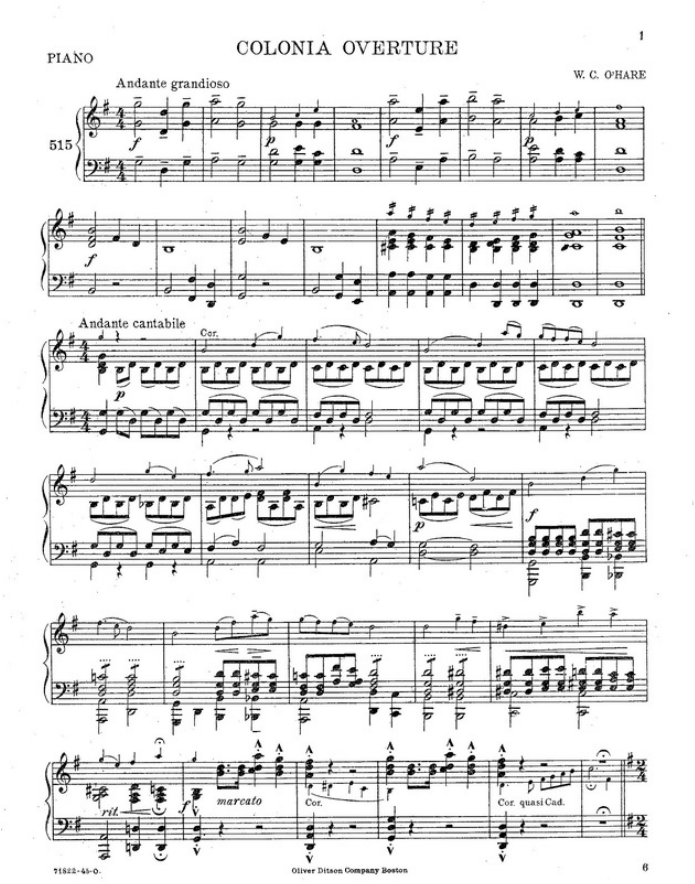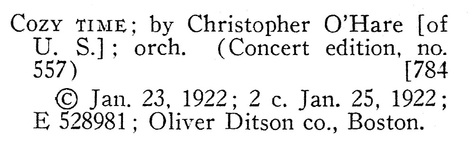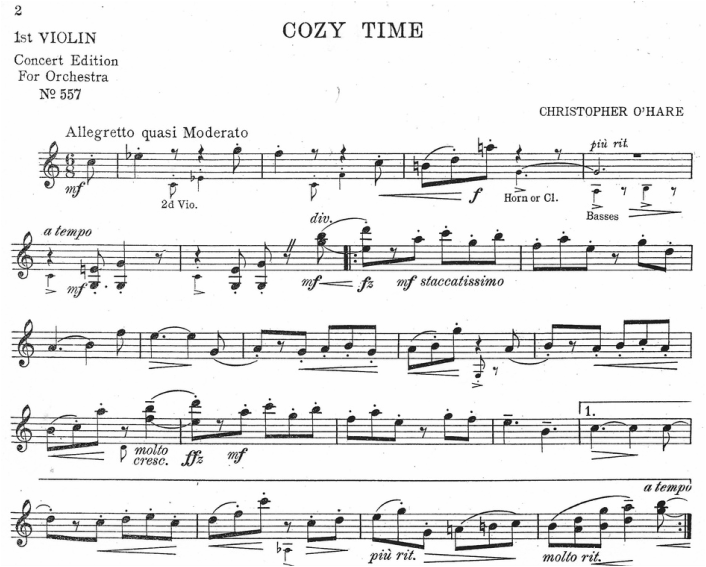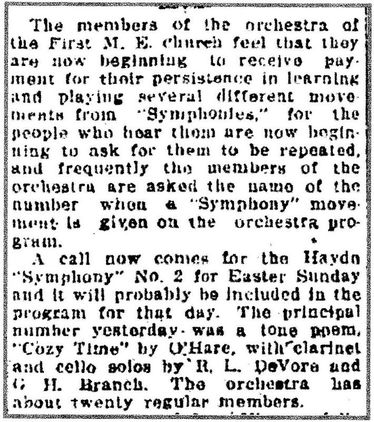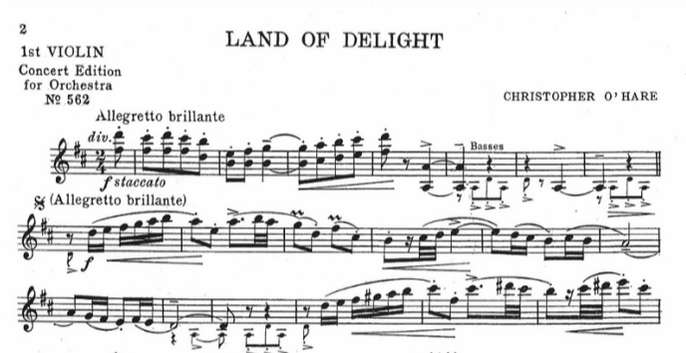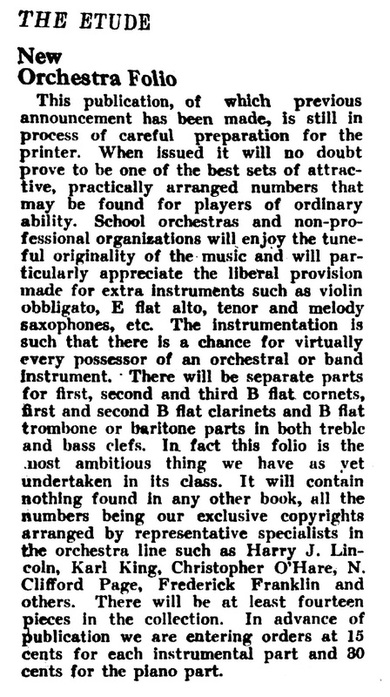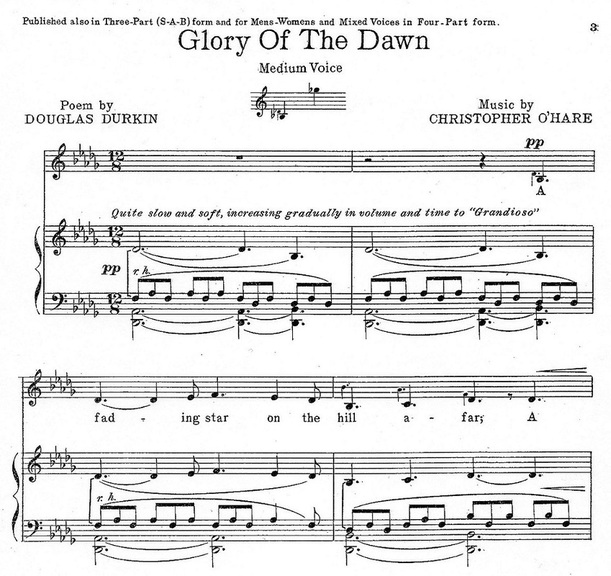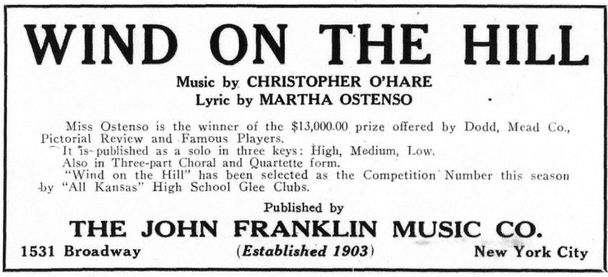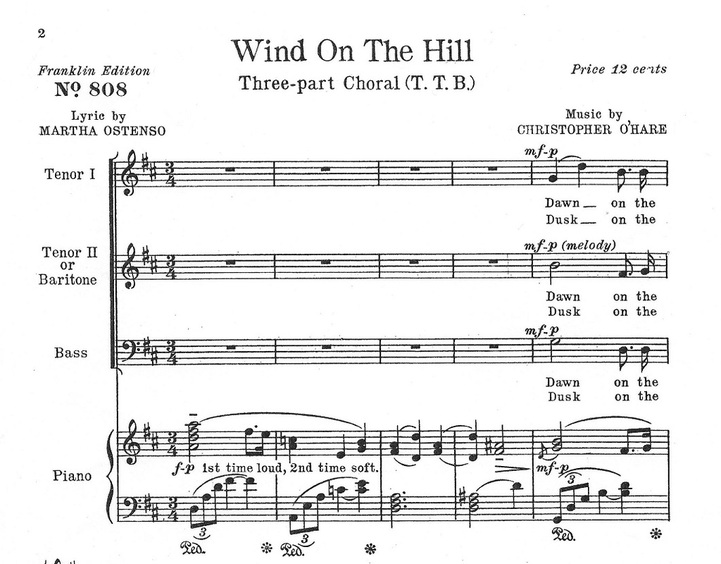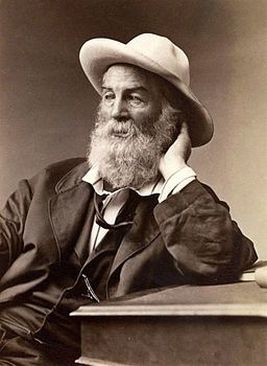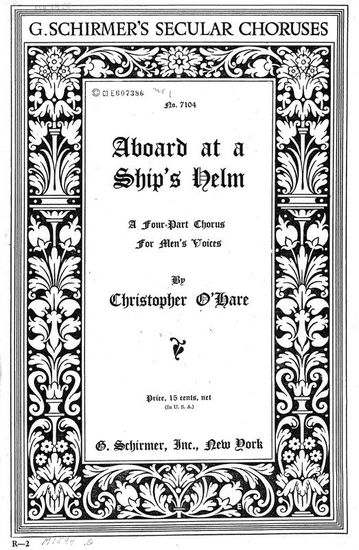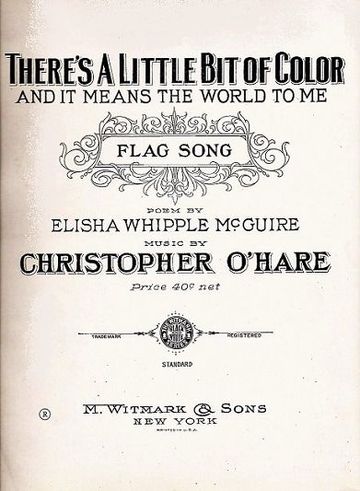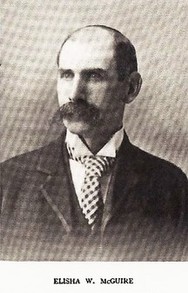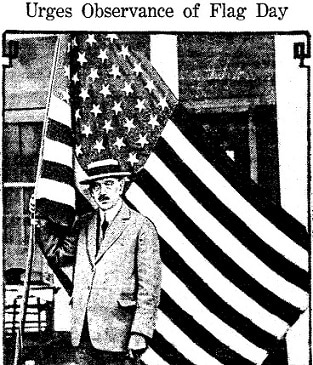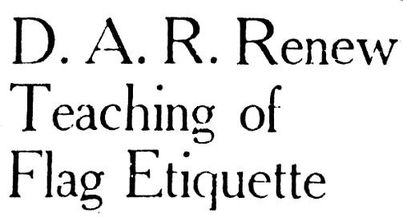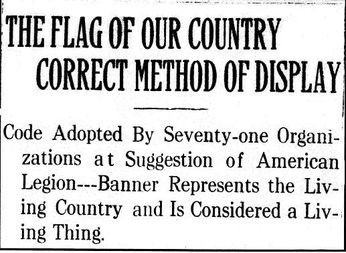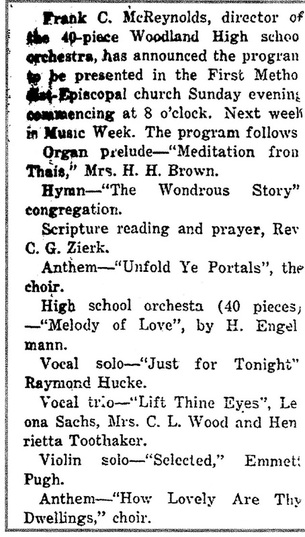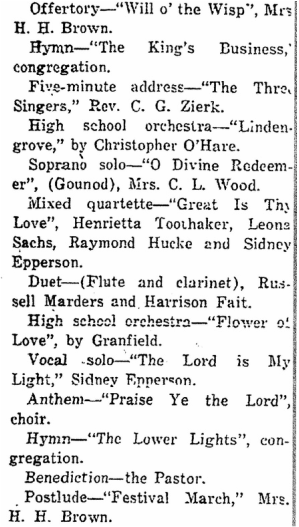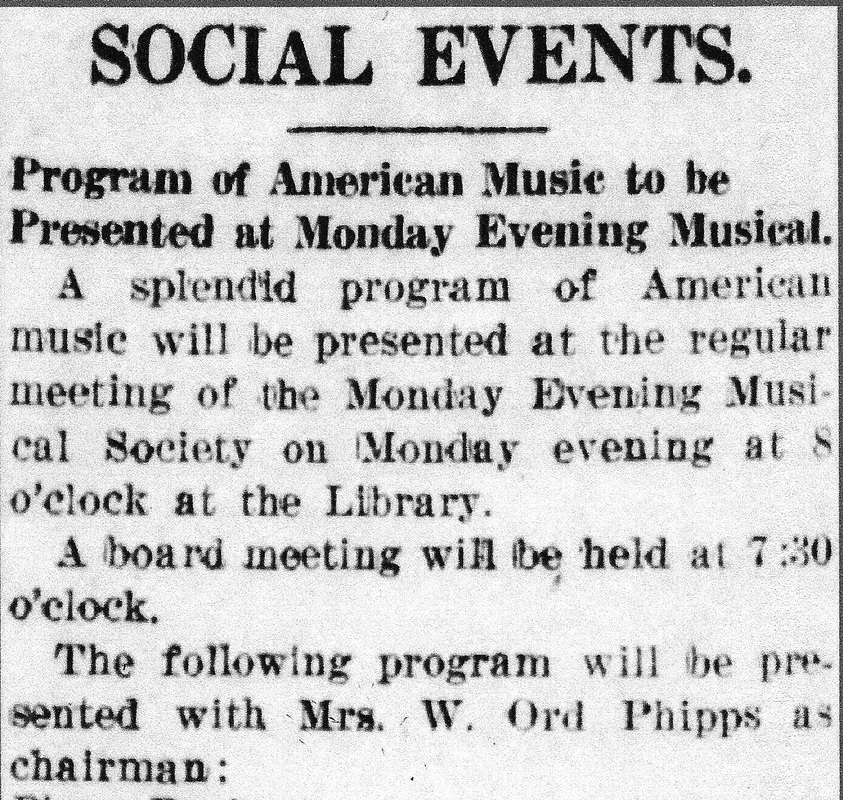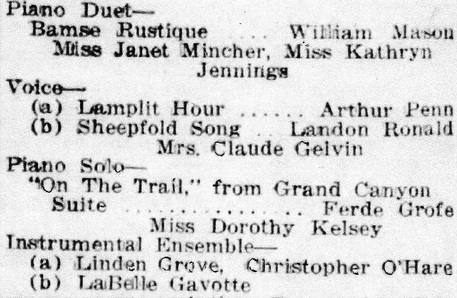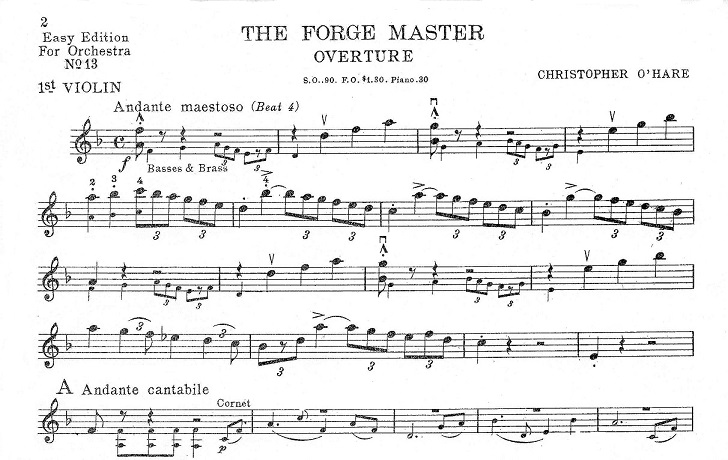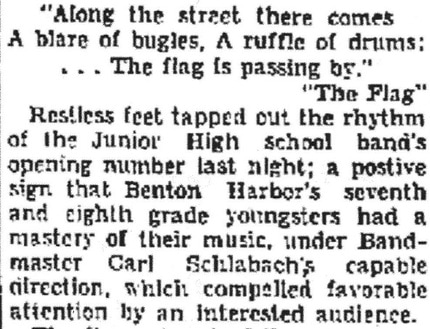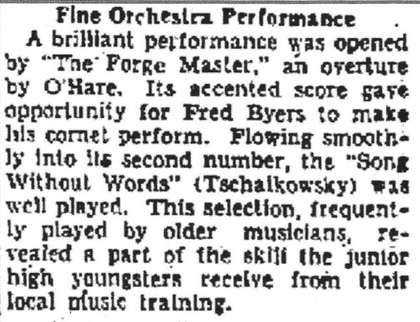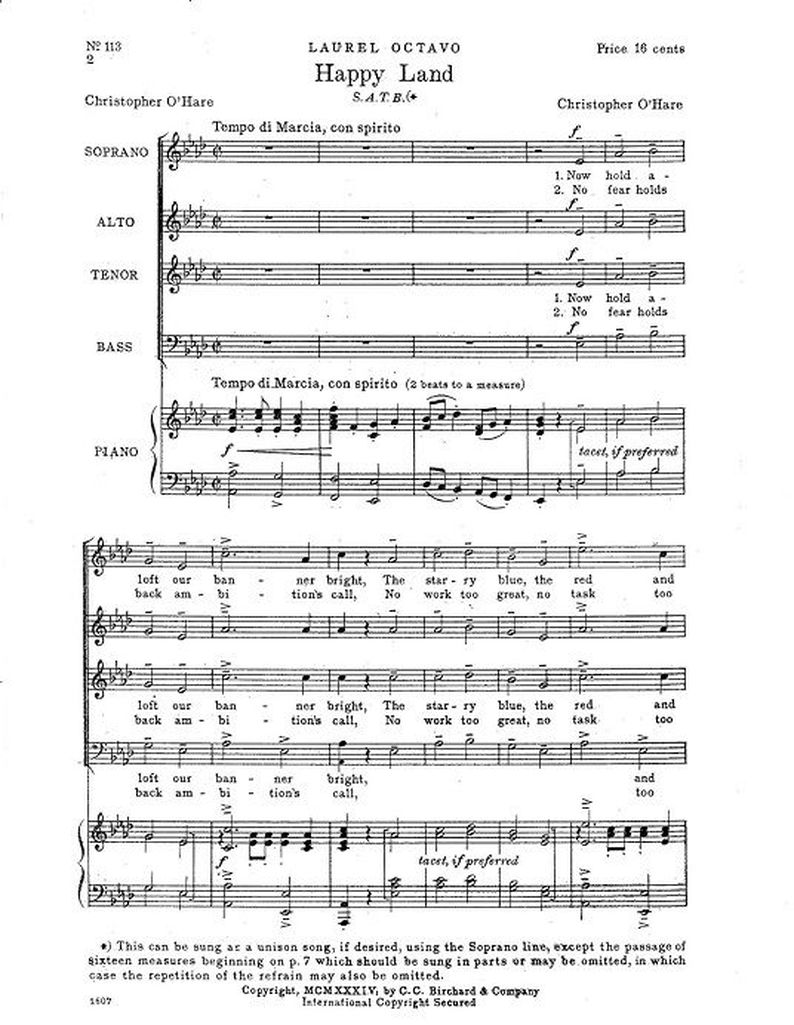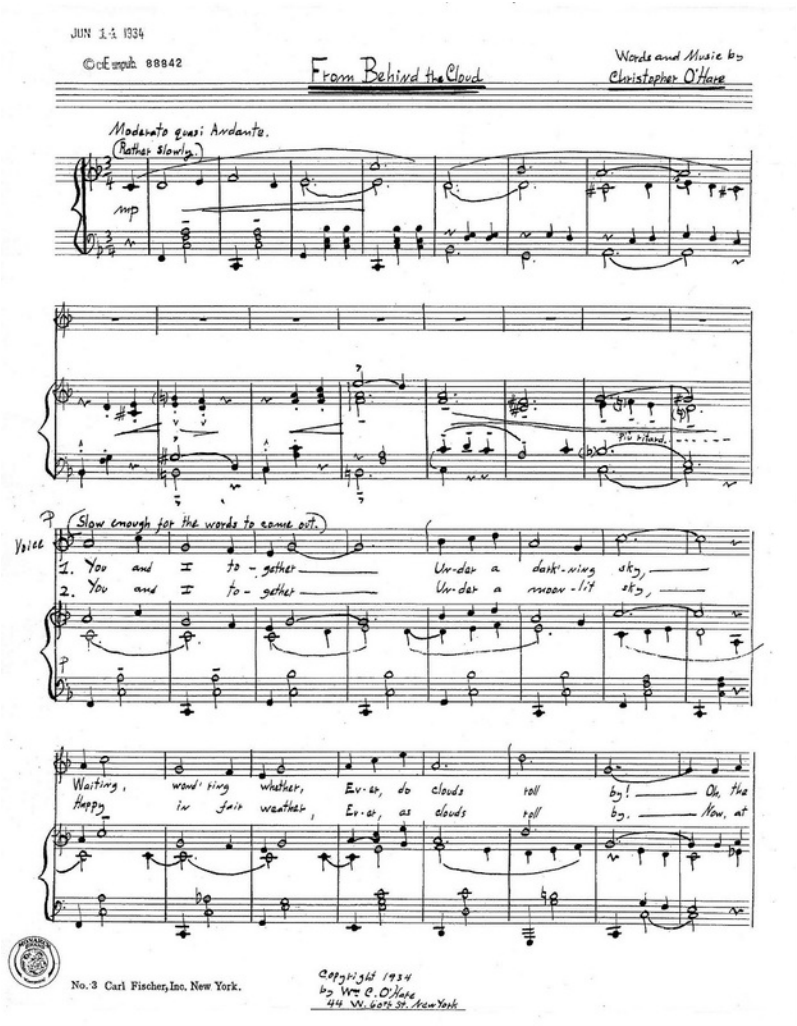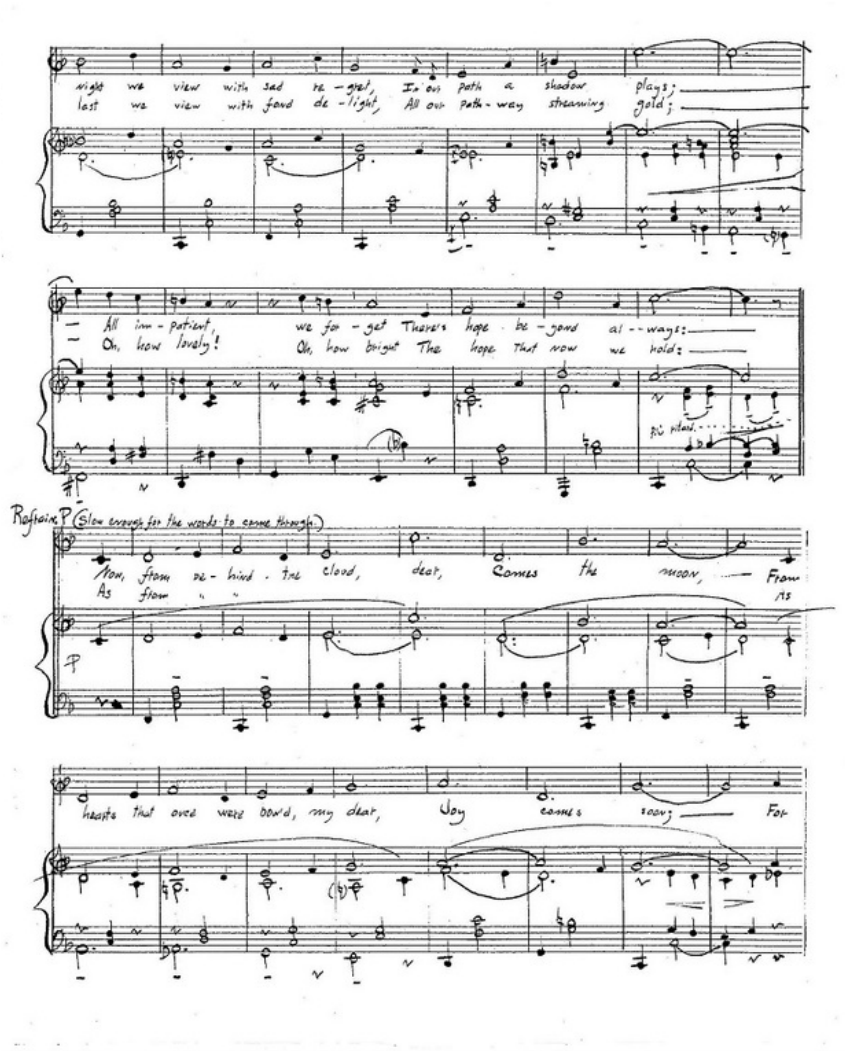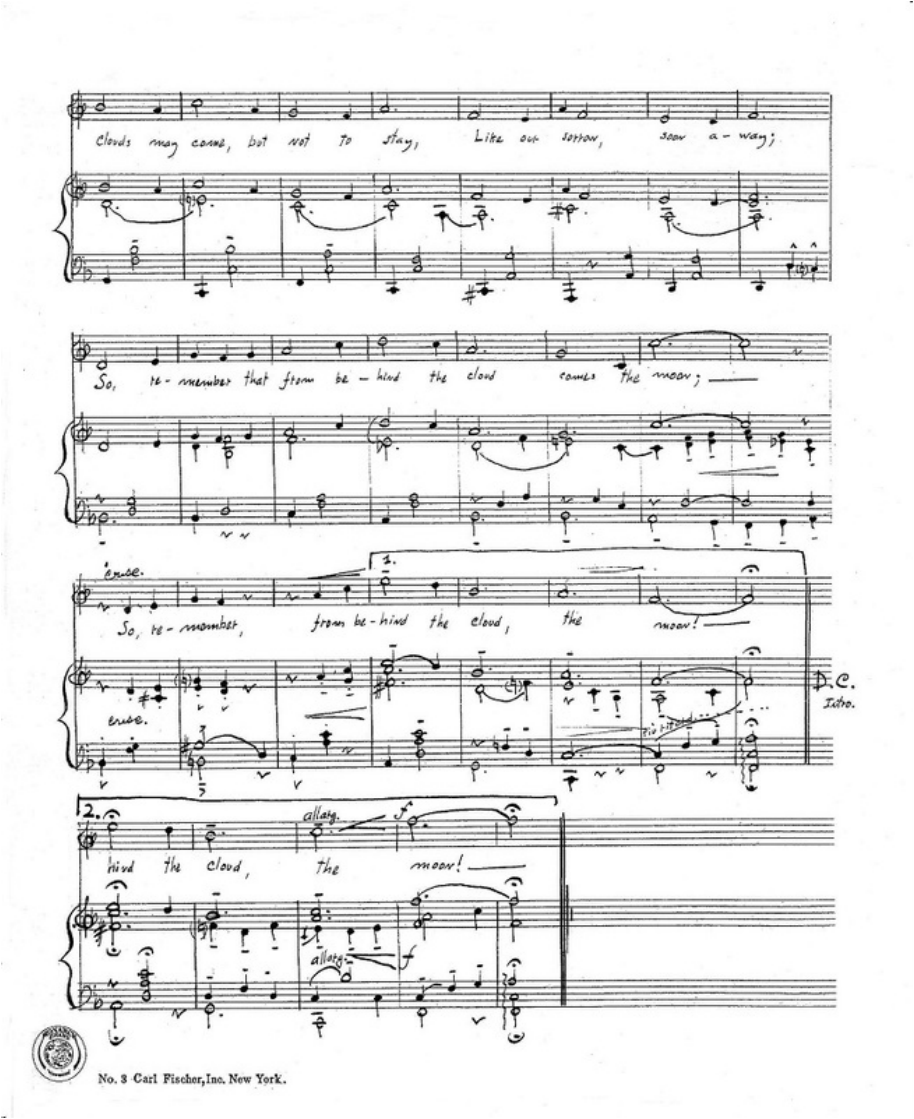As O'Hare focused increasingly on choral arrangements, primarily for John Franklin, he began composing orchestral pieces for Oliver Ditson.
Because Oliver Ditson would begin issuing O'Hare's silent film work in 1918, Colonia Overture may have shown Ditson what O'Hare could potentially contribute to its new Ditson's Music for Photoplay series. All but one of the photoplay pieces now behind him, O'Hare resumed writing for amateur orchestras.
Cozy Time (Oliver Ditson, 1922)
Land of Delight (Oliver Ditson, 1922)
Acknowledgement in The Etude of O'Hare's Reputation (1922)
Writing of impending publication of an orchestration collection, The Etude lists a handful of "representative specialists in the orchestra line" contributing to the folio, including O'Hare:
Collaborations with Douglas Durkin and Martha Ostenso (John Franklin, 1923-24)
During 1923-1924, O'Hare composed or arranged several pieces of music for a Canadian pair living in the U.S.-- Douglas Durkin, a former University of Manitoba professor teaching at Columbia University, and Norwegian-born Martha Ostenso, Durkin's former University of Manitoba student and future wife. Among the Durkin-O'Hare collaborations were Glory of the Dawn and What Is a World, My Boy.
Although Ostenso was best known for Wild Geese, her novel that critics hailed as a masterpiece of Canadian Realism, she also published A Far Land, her only poetry volume (1924). O'Hare set several of her poems to music, the most successful of which appears in part below.
A Whitman Poem Setting (G. Schirmer, 1925)
|
Most of O'Hare's work for G. Schirmer consisted of liturgical music for organ and choir or scores for school and other amateur orchestras. However, he occasionally completed a choral project for secular groups. One example is his 1925 setting of Walt Whitman's poem "Aboard at the Ship's Helm."
|
There's a Little Bit of Color and It Means the World to Me, a Patriotic Poem Setting (Witmark, 1925)
Originally published in 1919, Elisha Whipple McGuire's four-stanza poem, later set to music by O'Hare, speaks of patriotic feelings stirred by sight of the flag, recounts a battle in which the flag was carried, talks of others picking it up in the event of the carrier's death, and concludes with the determination to "raise the bit of color as the dearest thing of all."
|
Elisha Whipple McGuire
Born in Connecticut, Elisha Whipple McGuire (1854-1940) was an educator, Columbia Law School graduate, New York City attorney, and antiquarian book collector. Whipple's poem without O'Hare's setting is available online and is sold in a reprinted edition on amazon.com and other outlets. Click here to read the full lyric.
|
|
The Timing of O'Hare's Setting
An American Flag Association had been formed for the purpose of "building up a peace-time patriotism by inculcating a higher respect for the flag," and the association's president, Cornelius A. Pugsley, had declared that every school should have a Flag Day program and every home should fly a flag.
In preparation for 1925 Flag Day, Independence Day, Labor Day, and Amistice Day, newspapers carried articles about American Legion and D.A.R. efforts to educate the public in proper flag etiquette, including detailed lists of rules for handling and displaying the flag. In the months that these articles were appearing, Ann Elizabeth and Laura Christine O'Hare, died--the last of the generation living at the family home Linden Grove and former D.A.R, officers in Washington, D.C.'s Our Flag Chapter. |
All the journalistic attention to patriotism and the flag would have created an ideal climate for O'Hare's setting of Whipple's poem. It's impossible to know if Anne and Laura O'Hare might have liked the earlier poem or if their deaths might have been on O'Hare's mind when he set it to music.
Linden Grove (Oliver Ditson, 1925)
|
Linden Grove is discussed on the D.C. Family>Paternal Grandparents>Ancestral Home page. Please refer to that page for an excerpt and a discussion of family events almost certainly inspiring O'Hare's 1925 writing of his orchestral piece.
|
Woodland, California performance of Linden Grove, 1929
Franklin, Pennsylvania performance of Linden Grove, 1935
The Forge Master (Oliver Ditson, 1925)
Beginning and end of 1934 article from Benton Harbor, MI
Meadow Sprite (Oliver Ditson, 1927)
Told at Twilight (Oliver Ditson, 1927)
O'Hare's Told at Twilight was again geared for school orchestras, particularly for beginning orchestra students. School Music: A Magazine for Music Educators commented on a new Oliver Ditson folio and two orchestra scores, one of which was Told at Twilight:
The selections are not hackneyed, and directors of grade school orchestras will welcome both folio and two recent additions to the "Easy Edition" series.
As indicated by the copyright record, this piece should tell a story through music, a characteristic that would interest young performers.
Happy Land (C. C. Birchard & Co., 1934)
|
Published in C. C. Birchard's Laurel Octavo series, Happy Land is a twelve-page, four-part vocal arrangement with piano accompaniment-- music and patriotic lyric by Christopher O'Hare. Not the instructions at the bottom of the page allowing a music director or teacher to adjust the arrangement to different vocal groups.
|
In January 1934, the country was battling the Great Depression and the Dust Bowl. Baby Face Nelson, Pretty Boy Floyd, John Dillinger, and Bonnie and Clyde remained on the loose, not to meet their fates until later in the year. In Europe, Stalin and Hitler were consolidating their powers. Yet Americans were finding ways to lift their spirits. Prohibition had recently been repealed. Jean Harlow and Betty Grable were among the hottest theater and fashion icons. Shirley Temple and Donald Duck made their film debuts. Cole Porter's Anything Goes opened on Broadway. Flash Gordon first appeared in comic strips. Time Magazine named Franklin Delano Roosevelt its Man of the Year. O'Hare's Happy Land chorus asked, "Are we down-hearted?" and answered "No!"
Opening sample of Happy Land
From Behind the Cloud (copyrighted 1934; unpublished)
The latest O'Hare composition for which I can confirm a copyright date is a mysterious unpublished song with words and music by 67-year-old O'Hare. Because the song is unpublished and O'Hare has been dead for more than seven decades, as his closest living descendant I take the liberty to reproduce it here for educational purposes only.
Background image, top of page: detail from Cozy Time

